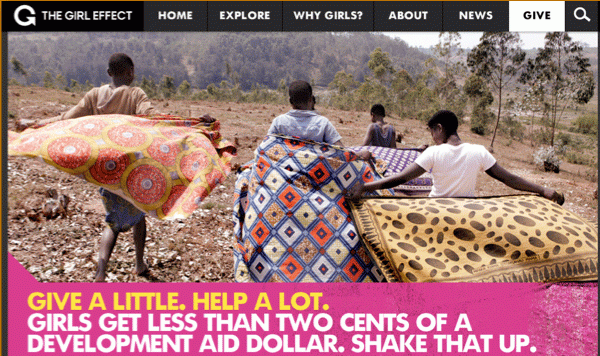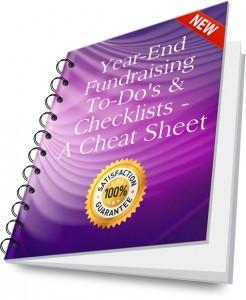
Ace this year’s appeal with magic words!
In a recent article I gave you the “Holy Trinity” of fundraising success:
You, Because and Thanks.
Those are essential ingredients for any fundraising appeal.
Today I’m going to give you four more magic words:
Small, Immediate, Expert and Support.
Each of these packs a bigger punch than you might imagine, and tends to persuade folks on the fence to jump right off and land in your court.
Let’s take a closer look at how this works.
Small (or Little)
Using the word “small” (or a synonym) can make a BIG difference.
I confess, I have trouble sharing this with you. Because for years I advised fundraisers not to use phrases like “Every little bit helps.” I reasoned (1) it’s not really true, because if you don’t raise enough you won’t be able to run your program, and (2) it somewhat diminishes the giver’s gift by calling it “small.”
But research doesn’t lie.
And two studies point to the fact you really do want to sweat the “small” stuff in fundraising.
Robert Cialdini’s research
Dr. Robert Cialdini, Professor of Psychology at Arizona State University and author of the groundbreaking book on the art of persuasion, Influence, examined the donation process of the American Cancer Society. He found that adding a minimal parameter to the gift solicitation delivered drastically different results.
In a door-to-door solicitation, one group of prospective donors were asked:
“Would you be willing to help by giving a donation?”
Another group were asked:
“Would you be willing to help by giving a donation? Every penny will help.”
People who were asked the second variation were almost twice as likely to donate!

The other amazing take-away from this study was the amount donors gave did not vary with the addition of the diminutive qualifier. Simply knowing that even a penny could help spurred people who might not otherwise have acted to give.
Carnegie Mellon University research
In a consumer study, researchers changed the description of an overnight shipping charge on a free DVD trial offer from “a $5 fee” to “a small $5 fee.”
 Simply adding the word “small” increased conversion by 20%!
Simply adding the word “small” increased conversion by 20%!
I should note you may want to target your market a bit when using this kind of ask, because there are three types of donors: Spendthrifts; Tightwads and Average Spenders. The “small” approach works especially well for the Tightwads (those most reluctant to part with their money), who likely account for about a quarter of your list. Neuroscientists have found the brains of Tightwads feel more “buying pain” than typical individuals. By using a diminutive term in your ask, you actually help to ease their pain.
Here’s an example I like:

Immediately
We live in an instant gratification culture. We buy something online, and we want to receive it overnight. We make a charitable donation online, and we want to know it went to work right away.
If this is reminding you to get your donor’s thank you letter out right away, good! You should always follow through right away to show your donors their gift was received and will be put right to work. But how can you use immediacy to persuade your donor to make a gift in the first place?
Ah…
Simply tell them “your gift will be put to work immediately.” Or “your gift will instantly be put to work.”
Gregory Ciotti’s Research
According to research by marketing strategist Gregory Ciotti people are wired for instant gratification: “our mid-brain lights up when we think about receiving something right away (and that’s the one [part of the brain] we want to fire up!).”
(MRI) studies, including one on nicotine addiction, have shown our frontal cortex is highly active when we think about having to wait for something. It makes us anxious. You don’t want your donor to be feeling anxious about donating to you!
Instead, you’re better off doing something to light up their mid-brain (where their pleasure center sits) so they think about receiving something right away and feel excited anticipation. This is what will get them to click on “Donate.”
In addition to excitement, when you trigger your donor to think about getting something right away (in this case it’s the warm glow of knowing the action they took resulted in a direct, immediate outcome), they feel emotionally satisfied. Satisfaction leads to action. Emotional satisfaction leads to long-term engagement.
Look at the difference here:
“When you donate you’ll instantly receive a profile of one of the women whose lives have been changed by your support”
“Immediately show your support by giving to end human trafficking and we’ll instantly send you a video message from our staff in the field.”
Expert
We trust authorities and experts. We seek them out whenever we need to make an informed decision.
And trust, for nonprofits, is an important commodity. It’s the foundation of all lasting relationships, and this holds true in spades for your relations with donors. If you can get donors to trust you, half the battle is won.
Unfortunately, many folks have less than a high opinion of charities. You need to overcome the perception that you may not be trustworthy. One way to do that is to showcase your expertise.
If you have highly reputable professionals on your team, make this known. List the credentials of your program directors. Your researchers, scientists, teachers, lawyers, doctors, therapists, artists and musicians.
If you have highly esteemed board members or donors, ask them to endorse you. This serves as social proof – another of Cialdini’s principles of persuasion. Little testimonials embedded into your appeals and donation landing pages can work wonders.
But nothing converts to donations better than actually using the word “expert” in your call to action. Imagine these two different appeals:
Yes, I want to support cancer research!
Yes, I want to support the expert cancer research team!
OR
Yes, I want to support the fieldwork team.
Yes, I want to send experts into the field to help rebuild.
It may not seem like an earth-shattering difference, but Ultraviolet Digital was able to get their client Kaya Skin Clinic a 137% increase in conversions and a 22% increase in sales by simply reworking their call to action to include the word “expert.”
 Support
Support
This is a killer tip for your “Donate” button.
Instead of simply saying “donate,” research shows you’re better off using the word “support” followed by the name of your cause or your specific campaign purpose. In fact, it can increase your donation rate by 16% per page view.
While you’re at it, research also shows adding a photo and amount increases donations. People simply pay more attention to images than text. And a picture really is worth 1000 words. Especially if it’s one that tells a story. If people can visualize how their money will help support a cause they value, they’ll be more likely to act.
It’s always a good idea to conduct an A/B test yourself if you can. In the example referenced above from the Clinton Bush Haiti Fund, here’s what they found by testing various variables:
They began with a website page with one column of text and no picture. When they added a photo, dollars donated per view increased 1%. When the page was redesigned into two columns, including the photo, and placing the response form side by side with the text, they saw an 8% increase!
When the increased the size of the font on the response form it led to a 2% increase.
When they reduced the number of fields on the response form (eliminating title, phone number) netted an 11% increase.
When they deleted the “security” icon reduced dollars per view by 5%.
When they changed the language on the “donate” button from “submit” to “support Haiti” resulted in a 16% increase in dollars donated per view.
Do You Believe in Magic?
It’s always good to have a few research-based fundraising tricks up your sleeve.
Give these words, and the three words I outline in my previous article, a try.
“You,” “Because,” and “Thanks.” “Small,” “Immediate,” “Expert,” and “Support.”
You’ll be well on your way to an appeal your donors won’t want to refuse.
Want More Help with Year-End Fundraising?

Get tons of useful year-end fundraising tips
If you’ve got your year-end fundraising plan completely under control, congrats! If you think a few tweaks might make a difference in your results, grab my Year-End Fundraising Solution Kit – To-Do’s and Checklists. It’s a step-by-step comprehensive road map to effective year-end fundraising. After working 30+ years in the trenches, I can vouch for this stuff. It’s tried and true! Get your “To-Do’s” HERE. Not satisfied? All Clairification products come with a 30-day, no-questions-asked, money-back guarantee. You truly can’t lose!
And if you can’t do everything you wish you could this year, get ahead of the game and put it on your list for next year.






Pollster Frank Luntz has said, “It’s not what you say, it’s what people hear.” Communicating effectively, in part, means choosing the words that resonate with folks in a meaningful way. Thanks for sharing some great examples of this principle.
Thanks Michael. Frank Luntz hit it on the nose, as we’re seeing today in spades. Appreciate your comment!
great post
A very informative article. Thank you for sharing such an amazing information with us.